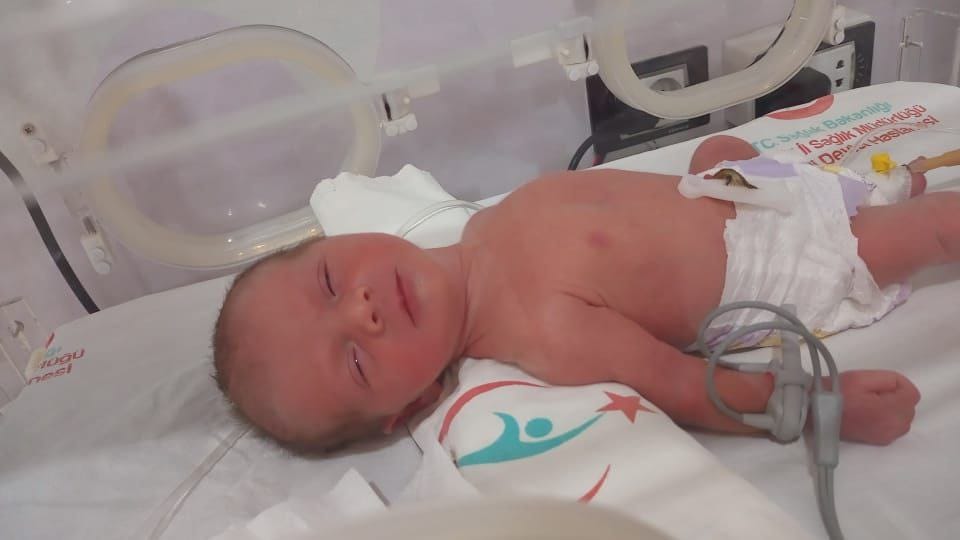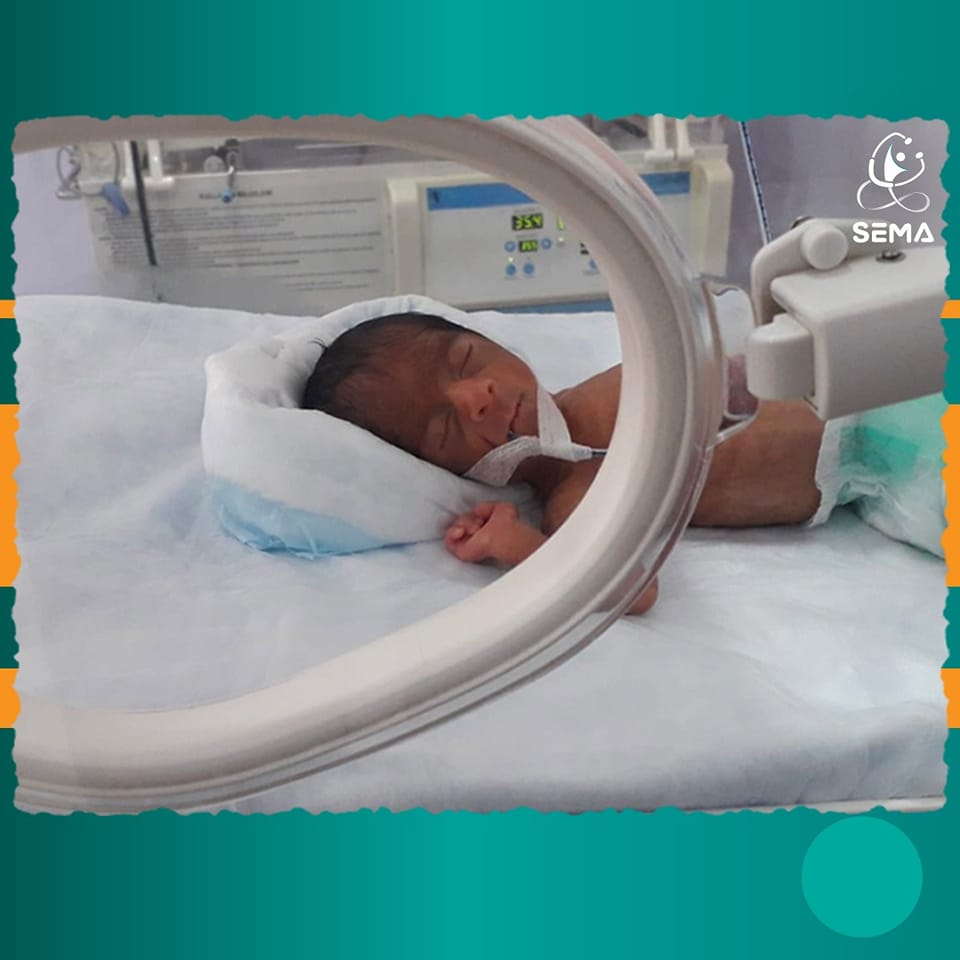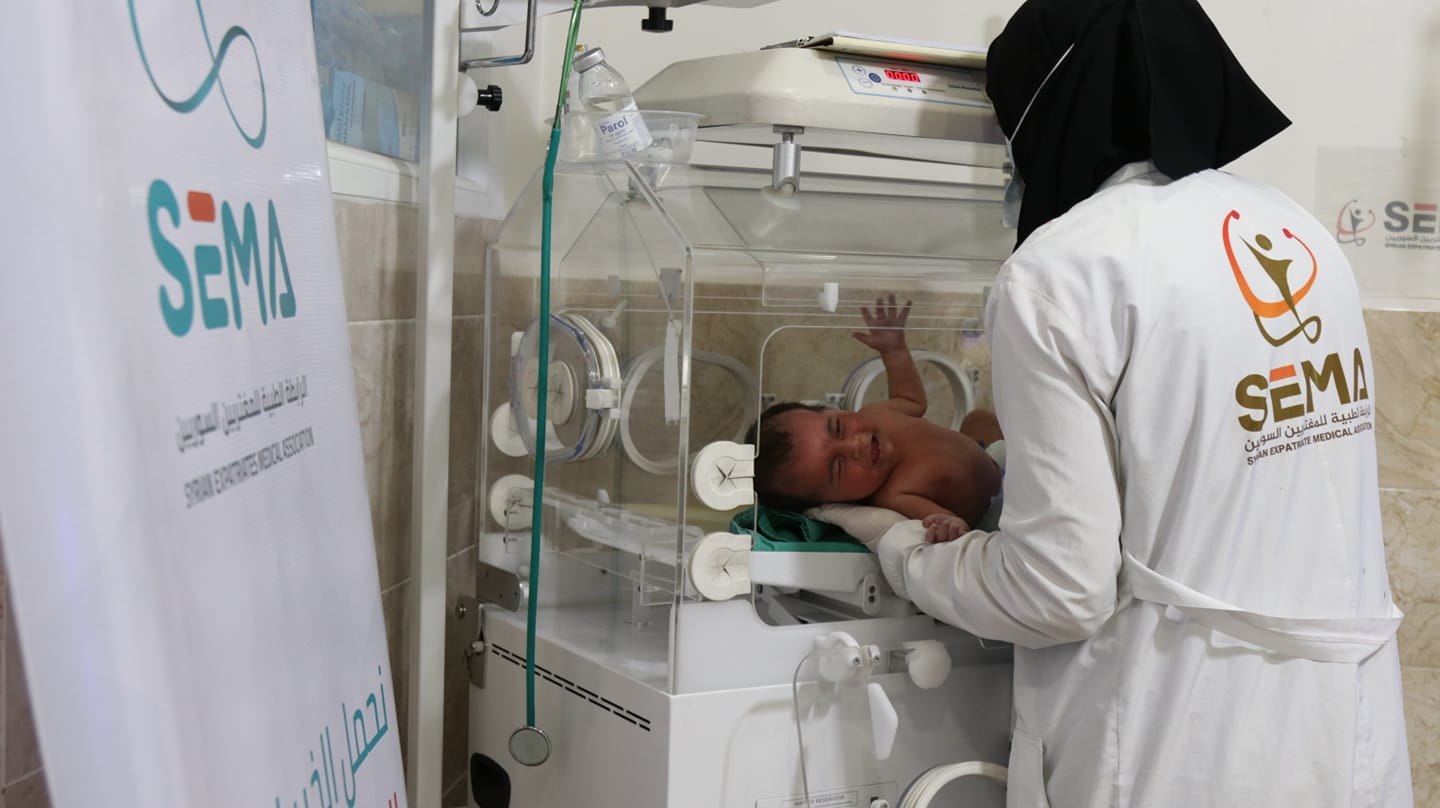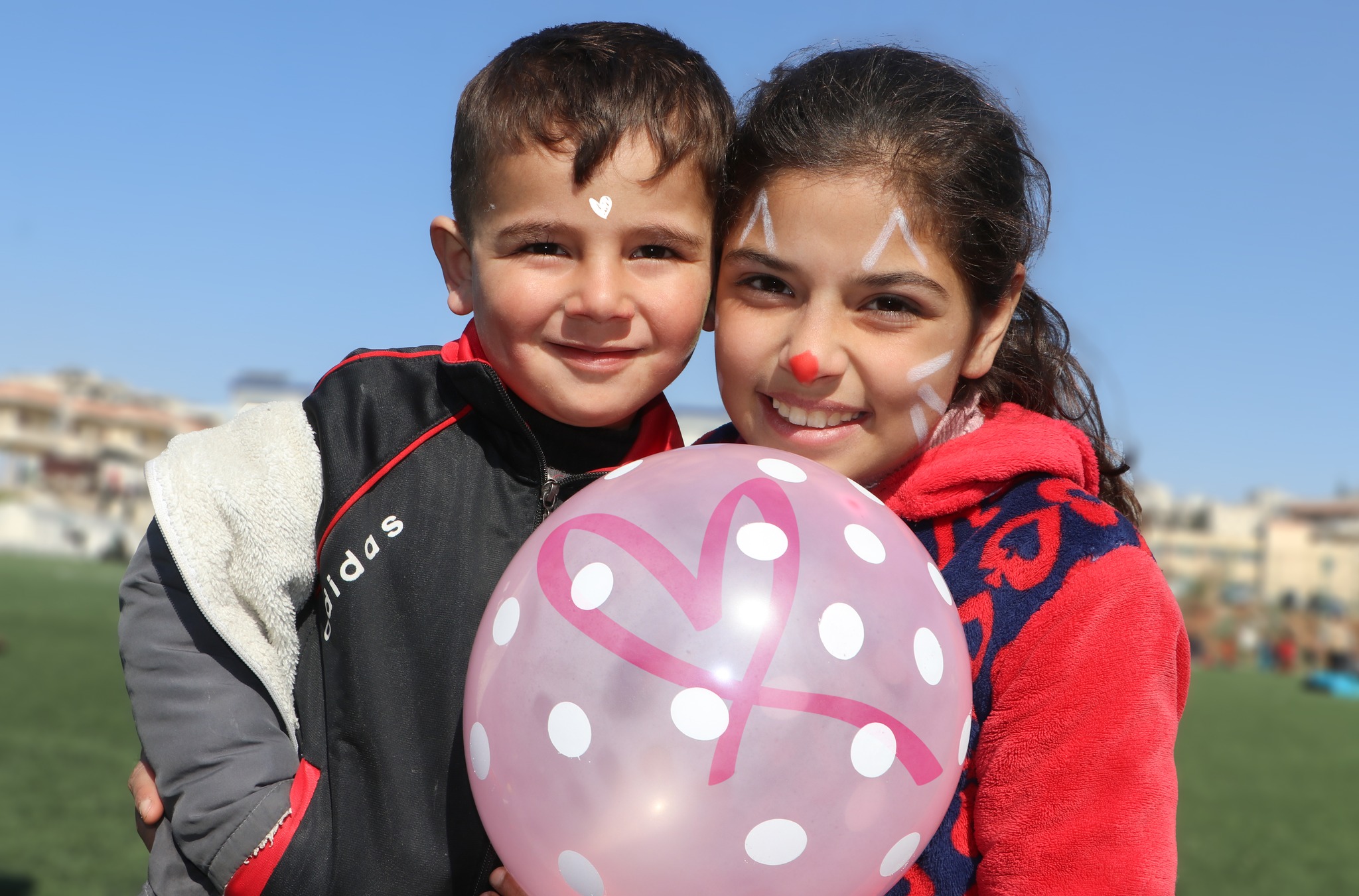A Cesarean section or a C-section is a surgery that is carried out in cases where it is safer for both mothers and their fetuses than traditional delivery procedures.
C-section procedures are part of the reproductive healthcare services that should be offered to women anywhere.
Nevertheless, many refugee Syrian women have no access to such crucial medical services including C-sections.
This is where the role of SEMA humanitarian, non-profit organization’s medical projects in refugee communities comes into play, as it provides many reproductive healthcare services for women in such vulnerable communities.
Still, your donations will be enormously helpful to improve, expand, and launch new healthcare providers to serve more women in those communities.

What is the meaning of Cesarean section (C-Section)?
Cesarean section or cesarean birth is the surgical delivery of a baby through a cut that is made in the mother’s abdomen and uterus.
Usually, healthcare professionals follow this method when they believe it is safer for the mother and the baby.
This incision made in the abdomen might be:
- Vertical (up-and-down): This cut extends from the belly button to the pubic hairline.
- Horizontal (across from side to side): This incision is usually used because it heals well and causes less bleeding.
It is worth noting that the type of incision made depends on the health state of both the mother and the fetus. The incision made in the uterus may be either vertical or horizontal.
Why are Cesareans carried out?
Cesareans or C-sections are usually carried out for women who can’t deliver vaginally.
This is where the role of C-sections comes into play as it allows for the fetus to be delivered surgically.
Cesareans could be planned in advance, or they might be done when there are problems during labor. There are several conditions that make a C-section the go-to option, these include:
- Abnormal heart rate of the fetus.
- Abnormal fetus’ position during birth.
- The mother has problems during labor.
- The large size of the fetus makes it hard to be delivered vaginally.
- The mother has placenta problems, such as placenta previa, in which the placenta blocks the cervix.
- Health conditions in the mother include diabetes, HIV infection, and high blood pressure.
- The mother has active herpes sores in the vagina or the cervix.
- The mother carries twins or other multiples.
- The mother has previous Cesareans.
How can a mother recover after a Cesarean section?
There are some measures that should be taken into consideration to hasten the recovery process of mothers after they underwent a C-section.
These include:
- The mother’s wound should be cleaned and dried every day.
- Mothers should wear comfortable and loose clothes as well as cotton underwear.
- Mothers should take painkillers to relieve the soreness of the Cesarean wound. It is mostly recommended that breastfeeding mothers should take ibuprofen.
- Mothers who have undergone C-sections should watch out for signs of infections.
Tips for coping with the emotional impact of a C-section
Women who have undergone surgical births can have feelings of loss, low self-esteem, grief, or personal failure.
Recent research has shown that rates of post-traumatic stress disorder among new mothers after childbirth range from 1.5% to 6%.
Therefore, undergoing a C-section can cause an emotional toll on women. The following are some tips that women can follow to alleviate their emotional burden:
- Having skin-to-skin contact with the baby will help make women feel happier about birth.
- Baby and breastfeeding support groups where new mothers can meet other parents and babies can help improve their mental health immensely.
- Asking for professional support will help new mothers who have newly undergone C-sections to recover psychologically.
The lack of reproductive healthcare for refugees
Prolonged conflicts and emergencies in refugee communities negatively affect Syrian women’s access to reproductive healthcare services.
Women mostly suffer from the negative consequences of the disrupted health system as well as sexual and gender-based discrimination and violence.
Early age of pregnancy, frequent urinary tract infections, and complications during pregnancy are common reproductive issues that women in refugee camps are mostly exposed to.
Unfortunately, rape and sexual assaults due to gender-based violence in refugee camps have also contributed to the spread of sexually transmitted infections and unwanted pregnancies among Syrian women.
Despite the fact that as many as 75% of Syrian refugees are women and children, reproductive health is not considered a top priority on international organizations’ agendas.
Above all, lack of access to reproductive health and care is the leading cause of many deaths, health issues, and disabilities among Syrian refugee women.
Some of the reproductive issues that many Syrian refugee women face include:
- Lack of use of contraceptives.
- Menstrual irregularities.
- Unplanned pregnancies.
- Preterm births.
- Infant morbidity.
SEMA’s efforts in providing reproductive healthcare for refugees
SEMA works on providing a wide range of health facilities in northwest Syrian regions, which cover many medical areas including reproductive health.
Most importantly, SEMA operates many healthcare projects which are concerned with providing the required healthcare services for Syrian refugee women.
These projects include the following:
- Al-Farabi Hospital.
This hospital specializes in reproductive health services.
The gynecologic clinic was able to receive 121 beneficiaries, whereas the pediatric clinic was visited by 76 patients. In addition, Al-Farabi also conducted 350 laboratory tests.
- Alikha’a Hospital.
This hospital operates in north Syria and some of its services are mostly dedicated to internally displaced refugees.
This healthcare provider aims at expanding and improving reproductive healthcare services by providing women with timely and effective healthcare services.
The hospital’s reproductive services include normal deliveries and C-sections, incubators service, woman and child hospitalization, gynecology clinics, and antenatal and postnatal care.
- Ein AL-Bayda PHC.
This healthcare provider offers multiple medical services including dental services, pharmaceutical services, and reproductive healthcare services.
In addition, this health center has 2500 monthly beneficiaries and targets 150000 refugees.
- Kiwan Hospital.
This hospital takes up a large area of southern rural Idlib.
It provides many reproductive healthcare services, such as normal deliveries and C-sections, woman and child hospitalization, family planning, and pregnancy monitoring.
- Moaz Abu Mahdi Hospital.
This healthcare provider covers a large area of the northern rural of Aleppo and offers medical services for many residents and internally displaced refugees.

Donate for healthcare for refugees
You can now save the lives of many Syrian pregnant women in the refugee communities from many health complications that could be avoided by performing C-section procedures.
Your donations can help us at SEMA fund the medical equipment, tools, and nursing staff needed in order to perform the Cesarean section procedures necessary to save the lives of many refugee women and their infants.
FAQ
What are the types of Cesarean sections?
Types of C-section surgeries include:
Low transverse.
Low vertical.
High vertical.
What is the difference between a C-section and a Cesarean?
There is no difference between C-section and Cesarean surgeries as both terms could be used interchangeably.
Cesarean section or C-section is a surgical procedure whereby babies are delivered through incisions made in the mother’s abdomen and uterus.
What are the 3 causes of birth by Cesarean section?
Three common health issues among women where a C-section delivery procedure is preferred include:
The sitting position of the embryo.
The bige size of the embryo.
Repeated C-section births.
When can a Cesarean section help women?
A Cesarean section can help women when there is a large fibroid blocking the birth canal, a pelvic fracture, or when the baby’s head is unusually large.


